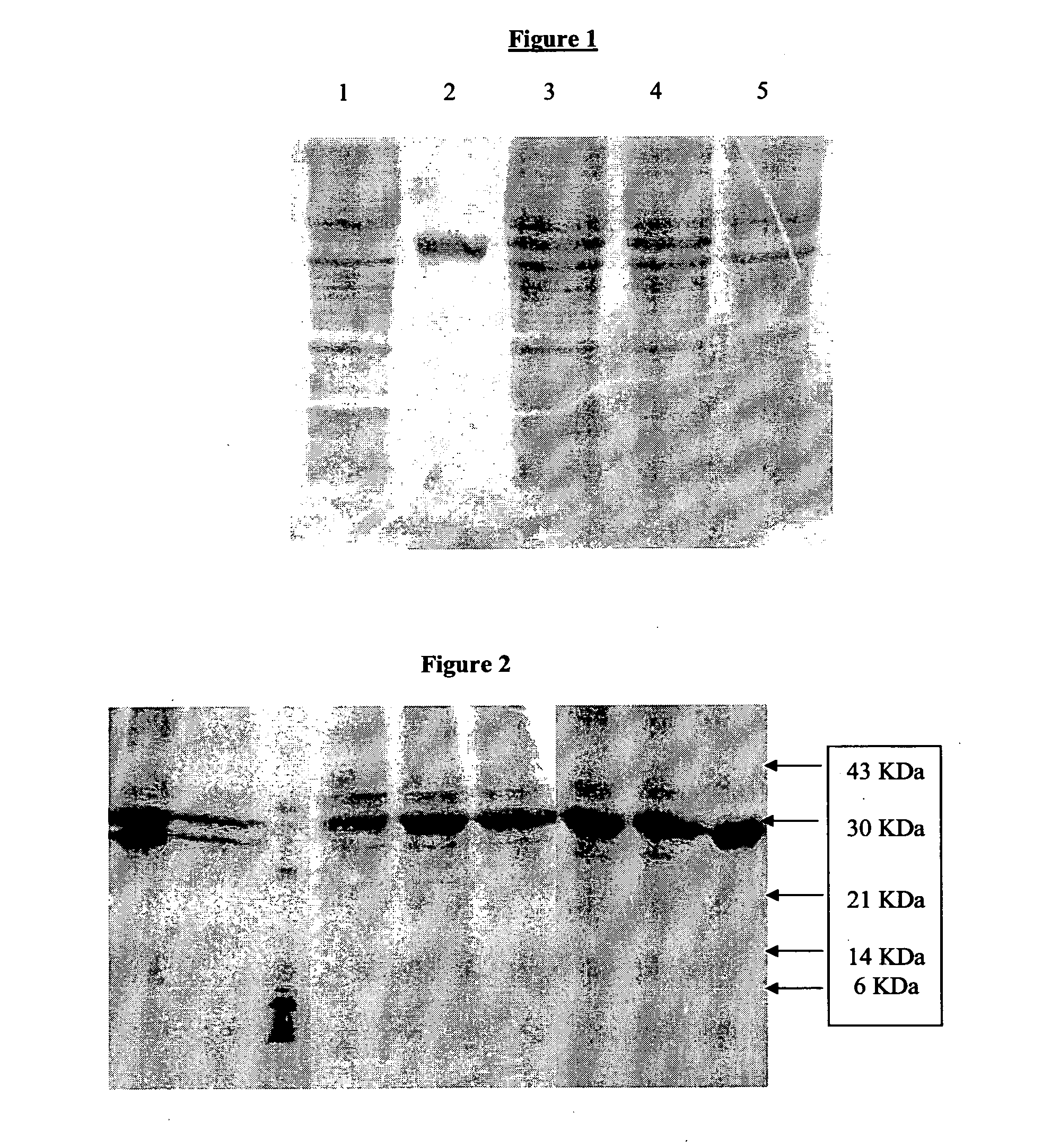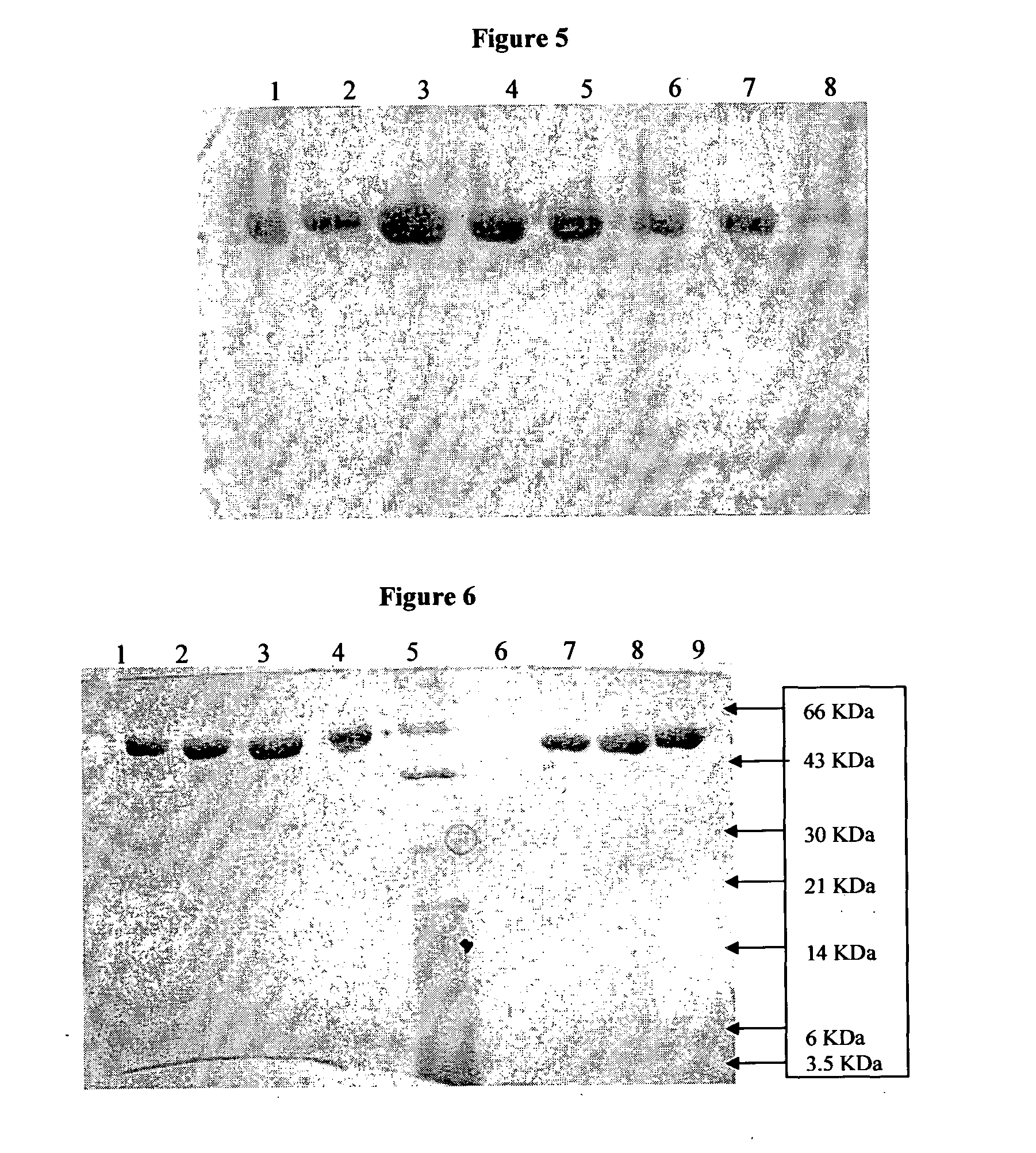Stable immunogenic protein having multiple cysteines molecules process therefor and composition thereof
a technology of immunogenic protein and cysteine, applied in the field of life sciences, can solve the problems of increased t-lymphocyte response, lack of complete protective immunity, and vaccine confer immunity, and achieve the effects of enhancing immunogenicity, immunogenicity, and immunogenicity, without impairing antigen stability, integrity and function
- Summary
- Abstract
- Description
- Claims
- Application Information
AI Technical Summary
Benefits of technology
Problems solved by technology
Method used
Image
Examples
example 1
Isolation and Purification of Recombinant PvRII Expressed as Inclusion Body in E. coli
Fermentation and Expression of Target Protein at High Cell Concentrations:
[0067]The first step in the process sequence is the preparation of inoculum. Seed culture from a vial among the stock of vials preserved at or below −70 deg.C is inoculated into the fully defined fermentation medium to get high cell density. The inoculum preparation can consist of two or three stages of scale-up before the last-stage inoculum is added to the medium sterilized in situ in the fermentor. Between each transfer samples are taken and checked for cell density, pH and culture purity, the last of which is done by microscopic examination of wet smear or Gram-stained smear of culture, to confirm compliance to specifications; each stage involves transfer of 5% to 10% of inoculum to the succeeding stage, which is grown in a shake-incubator at 150-250 rpm for 8-12 hours at 33 deg.C-37 deg.C.
[0068]The initial conditions of...
example 2
[0081]In this the protein purified and concentrated after IMAC run as above in Example 1 is taken for refolding. Refolding is done using the same conditions as given in example 1 above with the modification of the redox system in refolding buffer constituents as follows: 50 mM Tris buffer, 1 mM Titriplex, 1M urea, 0.5M Arginine-HCl, 1 mM Cystine, pH 7.2 to 7.4. No cyclodextrin is used. The concentrations of the buffer constituents at ±100% from above levels were tried and the given level is selected based on the results.
example 3
[0082]In this the protein purified and concentrated after IMAC run as above in Example 1 is taken for refolding. Refolding is done using the same conditions as given in example 1 above with the modification of the redox system in refolding buffer constituents as follows: 50 mM Tris buffer, 1 mM Titriplex, 1M urea, 5 mM Lysine, 2 mM Proline, pH 7.2 to 7.4. No cyclodextrin is used. The concentrations of the buffer constituents at ±100% from above levels were tried and the given level is selected based on the results.
[0083]The results of refolding yields obtained in the three examples given above are given in Table-2. The final product yield from the levels expressed was about 17% to 25%, much higher than the 5% mentioned for this protein in earlier process shown in the prior art and the final purity of the target protein is more than 98%.
[0084]Out of the three methods followed for refolding, Example 2 gave the highest yield, followed by methods followed in Examples 1 and 3.
TABLE 2Resu...
PUM
| Property | Measurement | Unit |
|---|---|---|
| temperature | aaaaa | aaaaa |
| weight | aaaaa | aaaaa |
| pH | aaaaa | aaaaa |
Abstract
Description
Claims
Application Information
 Login to View More
Login to View More - R&D
- Intellectual Property
- Life Sciences
- Materials
- Tech Scout
- Unparalleled Data Quality
- Higher Quality Content
- 60% Fewer Hallucinations
Browse by: Latest US Patents, China's latest patents, Technical Efficacy Thesaurus, Application Domain, Technology Topic, Popular Technical Reports.
© 2025 PatSnap. All rights reserved.Legal|Privacy policy|Modern Slavery Act Transparency Statement|Sitemap|About US| Contact US: help@patsnap.com



